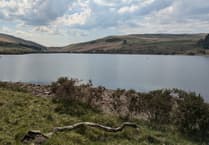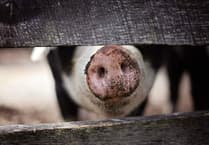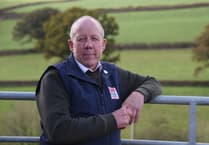Spring born lambs will be approaching weaning by the beginning of June. This can be a stressful time for them, so preparation is key. Carry out treatments before weaning and wean lambs onto familiar grazing. If this is not possible, then run a few cull ewes with the weaned lambs in the short-term to help them find water and give them more confidence writes Hilary Jones of Farm First Veterinary Services.
On a grass-based system, the target for weaning should be 12 to 14 weeks of age to allow ewes to regain condition for breeding again. By this time lambs will be getting very little nourishment from the ewe’s milk. Weaning at this age allows lambs to use the best grass, whilst the ewes can dry up on poorer grazing. If good grass is not available, it may be necessary to offer concentrate feed to ensure that growth continues.
Even when nutrition is optimal, the main challenges to weaned lambs tend to be internal parasites (worms), trace element deficiencies, Clostridial disease and Pasteurellosis.
Lambs are often routinely treated for worms at weaning without evidence of a significant worm burden or whether the chosen treatment will work. This can lead to a false sense that worms will not be an issue in the subsequent weeks. A better strategy is to carry out a Faecal Egg Count (FEC) prior to weaning, to find out whether treatment is necessary yet. If treatment is given, a post drench FEC may be advisable to ensure that dosing has been effective.

Many lambs are already trace element deficient before weaning and the transition onto a grass-only diet makes matters worse. Ruminants need an adequate supply of Cobalt and Vitamin B12 in their diet to convert grass into usable energy. They also require Selenium and Copper for good thyroid function and immunity to disease. If you don’t know the trace element status of your lambs, blood testing a small group of lambs prior to weaning can give a helpful indication as to whether supplementation is required.
Grass or forage testing is also useful, whereas soil testing is not, as it does not indicate which elements are available to the grazing livestock. There are many trace element products available, but they vary enormously in quality, so take independent advice on the best one for your flock. In addition, supplementing Copper unnecessarily can be highly toxic to sheep.
The stress of weaning can also trigger outbreaks of Pasteurellosis and transition onto rich silage aftermath can predispose lambs to sudden death from Clostridial Diseases such as Pulpy Kidney. By 12 weeks, any protection from the ewes’ colostrum will have been lost. Therefore, if not already vaccinated, start a course of Clostridial and Pasteurella vaccination prior to weaning, with a second dose 4-6 weeks later.
Farming Connect is offering subsidised funding for Technical Veterinary advice (70% of up to £500) which could include FEC, post drench efficacy testing and trace element testing of lambs or grass. This evidence will help your vet advise you on the best way to support your lambs and prevent a post weaning growth check which can be so hard to reverse.





Comments
This article has no comments yet. Be the first to leave a comment.